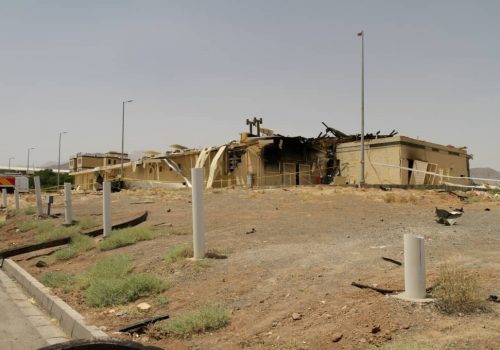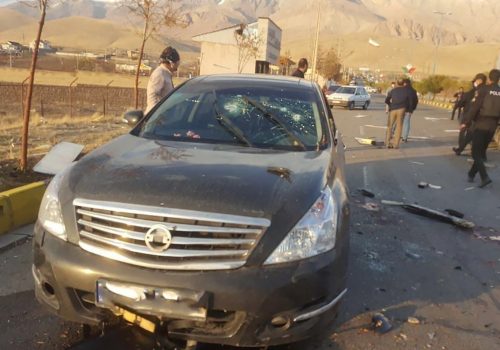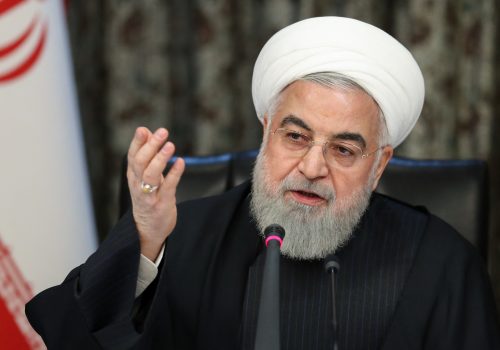A history of continuity in Iran’s long nuclear program
Iran’s interest in developing a nuclear deterrent is often attributed to the Islamic Republic, which, according to Western intelligence sources, had a structured nuclear weapons program until 2003. However, in reality, this interest predates the 1979 revolution and reflects a deep-seated desire for national prestige and development, as well as a need to deter regional rivals.
Shah Mohammad Reza Pahlavi, similar to the leadership under the Islamic Republic, believed that nuclear energy was the gateway to industrialization and the symbol of modernization. The father of Iran’s nuclear program, Akbar Etemad—who also the first chief of the Atomic Energy Organization of Iran (AEOI)—outlines the Shah’s logic: “for achieving an industrialized economy and high social standards, Iran had to resolve two main issues: ‘energy needs and acquiring high tech industries’… Nuclear technology would resolve both because countries that had pursued nuclear industry had also achieved substantial advancements in [other] technologies.”
The Shah was personally involved in the nuclear program and, in his private conversations with Etemad, instructed him that the primary purpose was to diversify energy resources, but that Iran should keep its options open in case “the regional military balance changes.”
Officially, the Shah’s position varied. For example, he argued that having a small number of nuclear weapons to deter the Soviet Union would be “silly.” Meanwhile, US Department of State documents quote him in June 1974 saying, that if other countries in the region developed nuclear weapons, Iran would too, “without a doubt and sooner than you think.”
The Shah occasionally lectured westerners about what he saw as the unfair treatment of Iran. In an interview with French journalists in 1976, he decried: “Why is it normal for you the Germans and the British to have atomic or hydrogen bombs while it is not for Iran although…it is not automatically protected by any other country…why for Iran [is] a simple matter of self-defense…a problem?” (Germany did not and does not have a nuclear arsenal, but it is under a NATO umbrella.)
It also bears noting that, despite the Shah’s alliance with the US, the Iranian leadership went to great lengths to insist on Iran’s “full rights” under the nuclear Non-Proliferation Treaty (NPT). For instance, Etemad asserted that “no country has a right to dictate nuclear policy to another,” further pointing out to Americans that Iran should not be treated as a “second-class citizen.” This sounds a lot like former President Mahmoud Ahmadinejad, who accused world powers of imposing “nuclear apartheid” on other members of the NPT.
The Shah also complained that US safeguard requirements for nuclear cooperation with Iran were “incompatible” with Iran’s “national sovereignty.”
In essence, Shah Mohammad Reza’s approach to Iran’s nuclear program was to expand and institutionalize an indigenous nuclear capacity, but to stop short of developing an arsenal that could jeopardize Iran’s security by triggering a regional nuclear arms race. Such capacity, however, could have enabled Iran to develop a nuclear weapon should one of Iran’s regional adversaries, such as Iraq or Saudi Arabia, weaponize their nuclear programs.
The 1979 Islamic Revolution initially halted this process. Revolutionary leaders argued that it was expensive and that nuclear technology would make Iran dependent on western technology, which contradicted one of the pillars of the revolution: estaghlal (independence).
The strategic imperatives of the Iran-Iraq war of 1980-1988 changed the calculus. Iraq’s efforts to develop a dirty bomb and systematic use of chemical weapons against Iranian troops and cities—which began in 1982 according to CIA assessments—convinced Tehran to resume nuclear work. Evidence suggests that Iran’s first attempts to recommence the program began in 1982 through a series of conferences and small-scale uranium conversion activities. It was further expanded upon with the importation of centrifuge kits from the Pakistani proliferator A.Q. Khan in the late 1980s.
The war had a profound impact on Iranian psychology. As the late president Ali Akbar Hashemi Rafsanjani once explained, “When we first began [the nuclear program], we were at war and we sought to have that possibility for the day that the enemy might use a nuclear weapon. That was the thinking. But it never became real.”
Western intelligence often overestimated Iran’s nuclear advancement. As early as April 1984, the CIA inaccurately predicted that Iran was in the final stages of developing a nuclear weapon. However, a US National Intelligence Council memorandum assessed that Iran could not develop a nuclear warhead by the end of the Iran-Iraq war and that it would take at least another decade. This has yet to occur.
Both a 2007 National Intelligence Estimate and the “archive” of Iran’s nuclear secrets reportedly stolen by Israel in 2018 indicate that Iranian leadership issued a “halt” order in 2003 after the US invasion of Iraq. In this context, journalist Jay Solomon writes that Mohsen Fakhrizadeh—the top Iranian nuclear scientist who was purportedly assassinated recently by Israel in November—complained about a government decision to cut his funding in 2007.
By then, of course, Iran’s major regional rival, Iraq, was not a serious threat, while Iran’s nuclear program was not capable of deterring the United States’ vast nuclear arsenal or Israel’s undisclosed weapons. On the contrary, the program put Iran at risk of attack by Israel and/or the US and led to the imposition of heavy sanctions.
Iranian officials have repeatedly rejected claims that Iran is still pursuing nuclear weapons, often pointing out to Supreme Leader Ayatollah Ali Khamenei’s fatwa against the development and stockpiling of weapons of mass destruction. Iran’s foreign minister, Mohammad Javad Zarif, who negotiated the 2015 Iran nuclear deal, has observed, “We do not consider nuclear weapons to be in our national security interests.”
Given that an Iranian arsenal would most likely prompt Saudi Arabia to go nuclear, the program would be detrimental to Iranian security in the long term. Therefore, it seems that the Islamic Republic has opted for the same hedging strategy that the Shah employed since 2003—to continue to master the nuclear fuel cycle short of weaponization. Rafsanjani is quoted as saying: “As long as we can enrich uranium and master the [nuclear] fuel cycle, we don’t need anything else. Our neighbors will be able to draw the proper conclusions.”
Despite the regime change that occurred in 1979, Iran’s approach to the nuclear question has largely remained consistent and will most likely remain so in the future. That is the result of both the country’s security environment and view of itself as a proud nation with a profound history that exists in an unjust international system—outlooks that transcend regime types.
Sina Azodi is a nonresident fellow at the Atlantic Council and a visiting scholar at the George Washington University’s Institute for Middle East Studies. He is also a PhD Candidate in International Relations at University of South Florida. Follow him on Twitter @Azodiac83.
Image: Iranian President Mahmoud Ahmadinejad (C) visits the Natanz nuclear enrichment facility, 350 km (217 miles) south of Tehran, April 8, 2008. Iran has begun installing 6,000 new centrifuges at its uranium enrichment plant, Ahmadinejad said on Tuesday, defying the West which fears Tehran is trying to build nuclear bombs. Picture taken on April 8, 2008. REUTERS/Presidential official website/Handout


